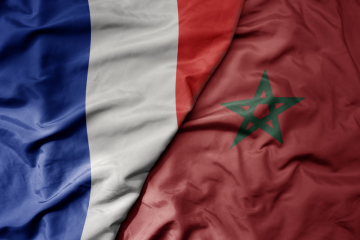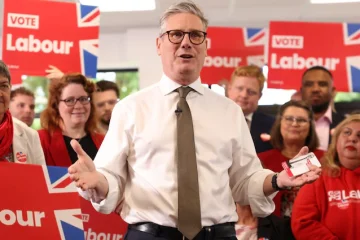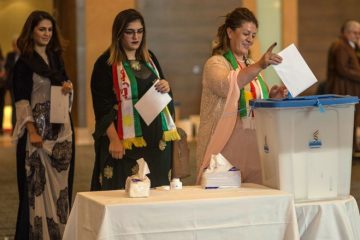
Mexico’s President-elect Claudia Sheinbaum and migration: What will change and what will remain the same?
On October 1st, Claudia Sheinbaum will be sworn in as the first female president in Mexico’s history. As president, Sheinbaum will have to address pressing issues that require domestic, bilateral, and regional cooperation, among them transit migration. Since taking office in 2018, Mexico’s current President Andrés Manuel López Obrador (AMLO) has promised to adopt a human rights approach to address transit migration, but throughout his presidency he has continued to implement policies that have further militarised migration routes and criminalised migrants seeking to reach the US, pushing many to take more dangerous routes. In 2023, the International Organization for Migration (IOM) found the US-Mexico border to be the world’s deadliest migration land route for migrants. Given the unprecedented levels of …

The 2015 EU “Refugee Crisis” : Analysing the IOM’s Information Campaign in Senegal
In 2015, Europe witnessed a significant increase in the influx of migrants, commonly referred to as the “2015 EU refugee crisis.” This article explores how this “crisis” transformed the migration-development agendas. With a specific focus on IOM’s information campaign in Senegal, I argue that the EU’s post-crisis migration policy has been characterised by the securitisation and externalisation of borders, reinforcing a pre-existing development agenda that primarily serves the political interests of EU states. What makes Senegal’s information campaign noteworthy is its use of affective, emotional, and relatable content to discourage Senegalese people from embarking on “irregular” journeys, rather than resorting to explicit violence such as highly militarised border controls. Although 2015 may sound like a long time ago, this type …

OxPol Blogcast. Politics, Re-Imagined — Displacement and the World Economy with Alexander Betts
How can we ensure that displaced people live in safety and dignity and create a policy that is sustainable at the same time? In this episode, we speak to Dr. Alexander Betts, the Leopold Muller Professor of Forced Migration and International Affairs at the Refugee Studies Centre, and the Director of the Refugee Economies Programme, both at the University of Oxford. Alexander has written extensively on the political economy of refugee protection — highlighting how displaced people can access and contribute to economies worldwide. Politics, Re-Imagined is a series by the Department of Politics and International Relations (DPIR) at the University of Oxford focused on exploring tangible and sustainable solutions to the most pressing challenges facing humanity today. Listen on:

Have we underestimated migration in the Franco-Moroccan diplomatic crisis?
Traditionally close partners, Morocco and France have seen their relationship deteriorate in recent years under a variety of pressures. Much analysis has focused on the role of high politics and diplomatic considerations, such as the question of the sovereignty of Western Sahara. This article argues that while these are important, bottom-up approaches must also be considered. In particular, we highlight the impact of visa restrictions on inter-societal links, and how these affect the core of bilateral relations by damaging the human fabric of politics. The “exceptional partnership” between France and Morocco is a thing of the past, or at least severely damaged. Over the last two years, new crises have erupted at regular intervals. The most recent source of tension …
Biden, López Obrador and the politics of migration: a return to the status quo?
Joe Biden’s presidential victory has brought temporary relief for many undocumented and mixed-status families in the US. Biden promised to reverse several of Trump’s executive orders on immigration and refugee policy within his first 100 days in office including reinstating the Deferred Action for Childhood Arrivals (DACA) program, ending the Migrant Protection Protocols (MPP) also known as “Remain in Mexico,” and creating a “road map” to citizenship for the approximate 10.5 million undocumented immigrants in the US. While Biden’s immigration agenda contains federal and local level priorities, little emphasis has yet been placed on the bilateral scale with the US’s southern neighbour, Mexico. Yet, bilateral immigration negotiations should be a priority for administrations on both sides of the border. In …
The Crisis of Migrant Labour in India during Covid-19
The Indian Government’s initial response to Covid-19—a stringent nationwide lockdown which commenced with an intimation period of only “four hours”—was hailed by the World Health Organisation as “timely and tough.” However, this international acclaim overlooked the disastrous result of the rushed lockdown on India’s migrant workforce. For them, the restrictions imposed by the lockdown has endangered their access to healthcare, housing, food and social security, which has further pushed their lives in precarity. Immediate action is needed from the Central Government to tend to their current needs and provide them with long-term economic stability. Statistics of Migrant Labour in India As per the census of 2011, India has approximately 453.6 million internal migrants. From this, the migrant workforce is estimated to be around 100 million. The Economic Survey of 2017 estimated …
The Importance of Changing Hukou Status for Better Spatial Equalities in China
From 2016 to 2020, China has been carrying a five-year project of hukou reform, granting urban hukous to rural-to-urban migrants. The hukou system was initiated in 1958 to control the movement of the Chinese population. Each Chinese citizen is assigned either a rural or urban hukou, depending on their residency. It is noteworthy that Chinese citizens cannot hold both a rural and urban hukou simultaneously. This has caused major problems for the estimated 262 million rural workers in urban areas nationwide. The five-year project has sought to convert rural hukous to urban ones to help rural Chinese to succeed in urban areas. As the project comes to an end, it is important to analyse whether hukou conversion – loosening the requirements to change a rural hukou to urban hukou – is conducive to rural Chinese citizens’ educational and social success, …

The Brexit Campaigns: In Out, In Out, Shake It All About
The rival camps are taking shape. Organisations have been launched, slogans road tested and logos commissioned. While no one knows when the EU referendum will take place, everyone has decided it’s time to make their case. A couple of weeks in, and the similarities between the Leave and Remain camps are as as striking as the differences. Both are quick to underline their patriotism; both go out of their way to emphasise British strength. No one, not even in the ‘remain’ camp, seems particularly fond of the European Union. And – perhaps most importantly – both campaigns are profoundly divided. On the ‘leave’ side, we have Leave.EU and Vote Leave, run by Matthew Elliott of Taxpayers Alliance fame. While the …







